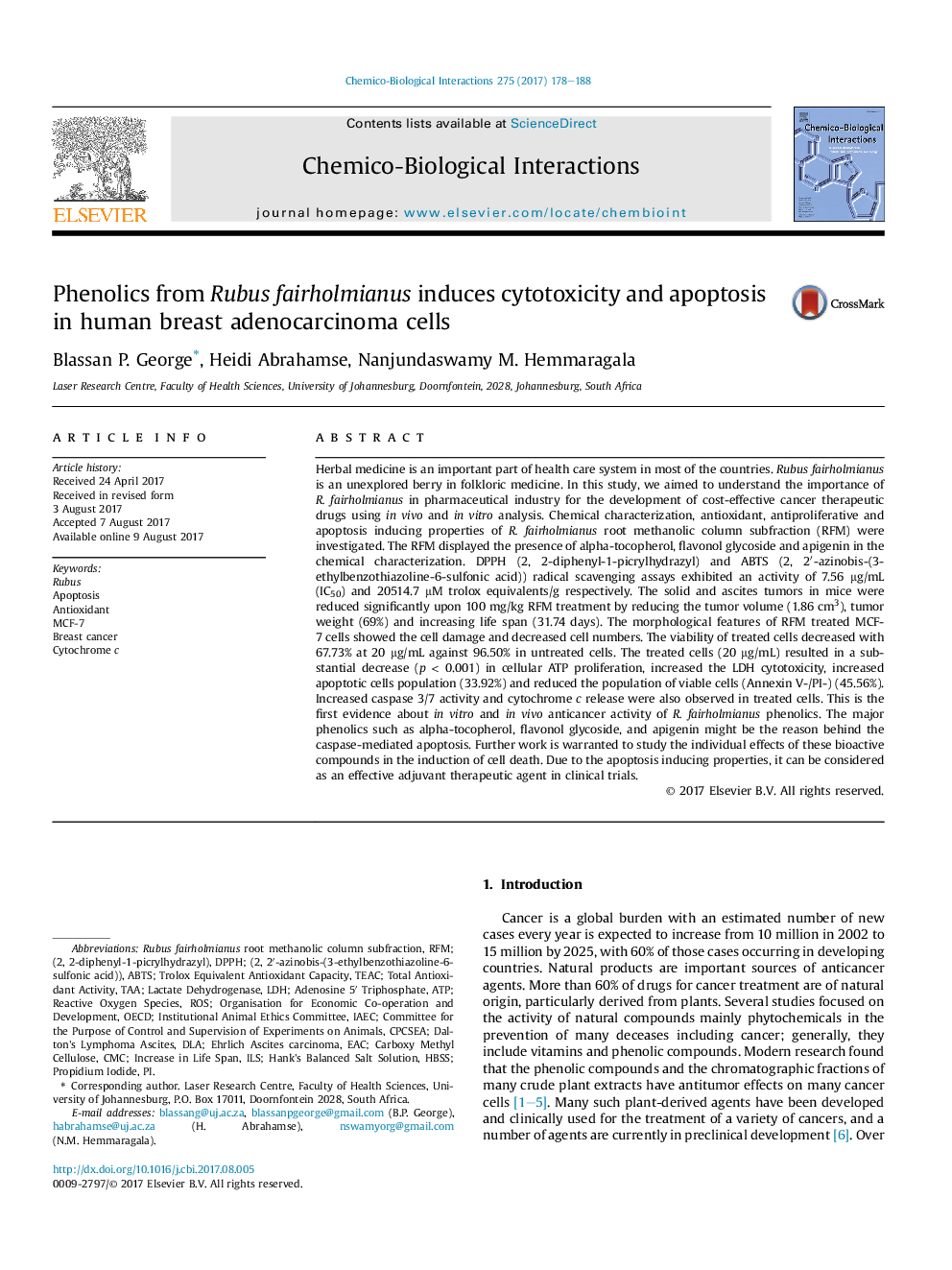| کد مقاله | کد نشریه | سال انتشار | مقاله انگلیسی | نسخه تمام متن |
|---|---|---|---|---|
| 5559267 | 1561567 | 2017 | 11 صفحه PDF | دانلود رایگان |

- This study confirmed that RFM is rich in phenolic compounds.
- RFM effectively reduced the cell viability and ATP proliferation.
- Morphological examination was supportive for the LDH cytotoxicity.
- Decreased percentage of viable cells in Annexin V/PI double staining.
- Caspase 3/7 and cytochrome C activities supported caspase dependant apoptosis.
Herbal medicine is an important part of health care system in most of the countries. Rubus fairholmianus is an unexplored berry in folkloric medicine. In this study, we aimed to understand the importance of R. fairholmianus in pharmaceutical industry for the development of cost-effective cancer therapeutic drugs using in vivo and in vitro analysis. Chemical characterization, antioxidant, antiproliferative and apoptosis inducing properties of R. fairholmianus root methanolic column subfraction (RFM) were investigated. The RFM displayed the presence of alpha-tocopherol, flavonol glycoside and apigenin in the chemical characterization. DPPH (2, 2-diphenyl-1-picrylhydrazyl) and ABTS (2, 2â²-azinobis-(3-ethylbenzothiazoline-6-sulfonic acid)) radical scavenging assays exhibited an activity of 7.56 μg/mL (IC50) and 20514.7 μM trolox equivalents/g respectively. The solid and ascites tumors in mice were reduced significantly upon 100 mg/kg RFM treatment by reducing the tumor volume (1.86 cm3), tumor weight (69%) and increasing life span (31.74 days). The morphological features of RFM treated MCF-7 cells showed the cell damage and decreased cell numbers. The viability of treated cells decreased with 67.73% at 20 μg/mL against 96.50% in untreated cells. The treated cells (20 μg/mL) resulted in a substantial decrease (p < 0.001) in cellular ATP proliferation, increased the LDH cytotoxicity, increased apoptotic cells population (33.92%) and reduced the population of viable cells (Annexin V-/PI-) (45.56%). Increased caspase 3/7 activity and cytochrome c release were also observed in treated cells. This is the first evidence about in vitro and in vivo anticancer activity of R. fairholmianus phenolics. The major phenolics such as alpha-tocopherol, flavonol glycoside, and apigenin might be the reason behind the caspase-mediated apoptosis. Further work is warranted to study the individual effects of these bioactive compounds in the induction of cell death. Due to the apoptosis inducing properties, it can be considered as an effective adjuvant therapeutic agent in clinical trials.
314
Journal: Chemico-Biological Interactions - Volume 275, 25 September 2017, Pages 178-188